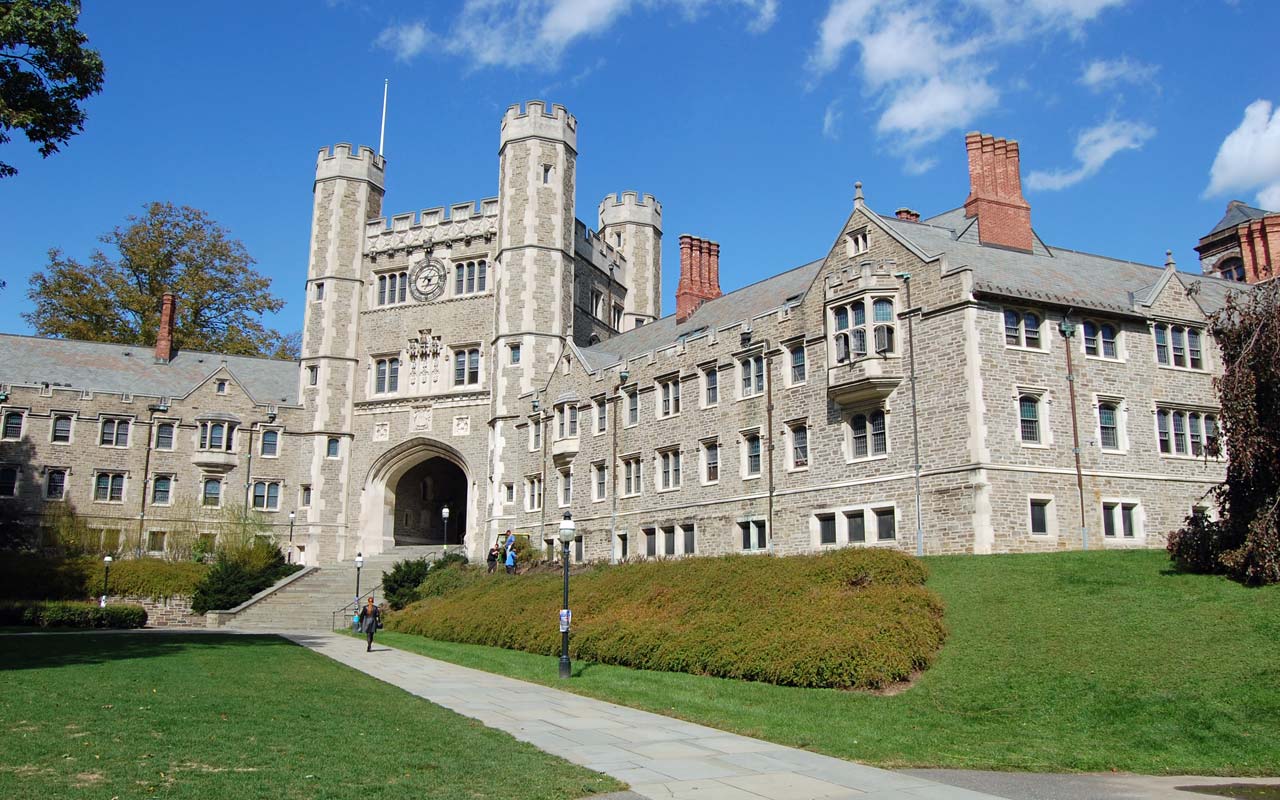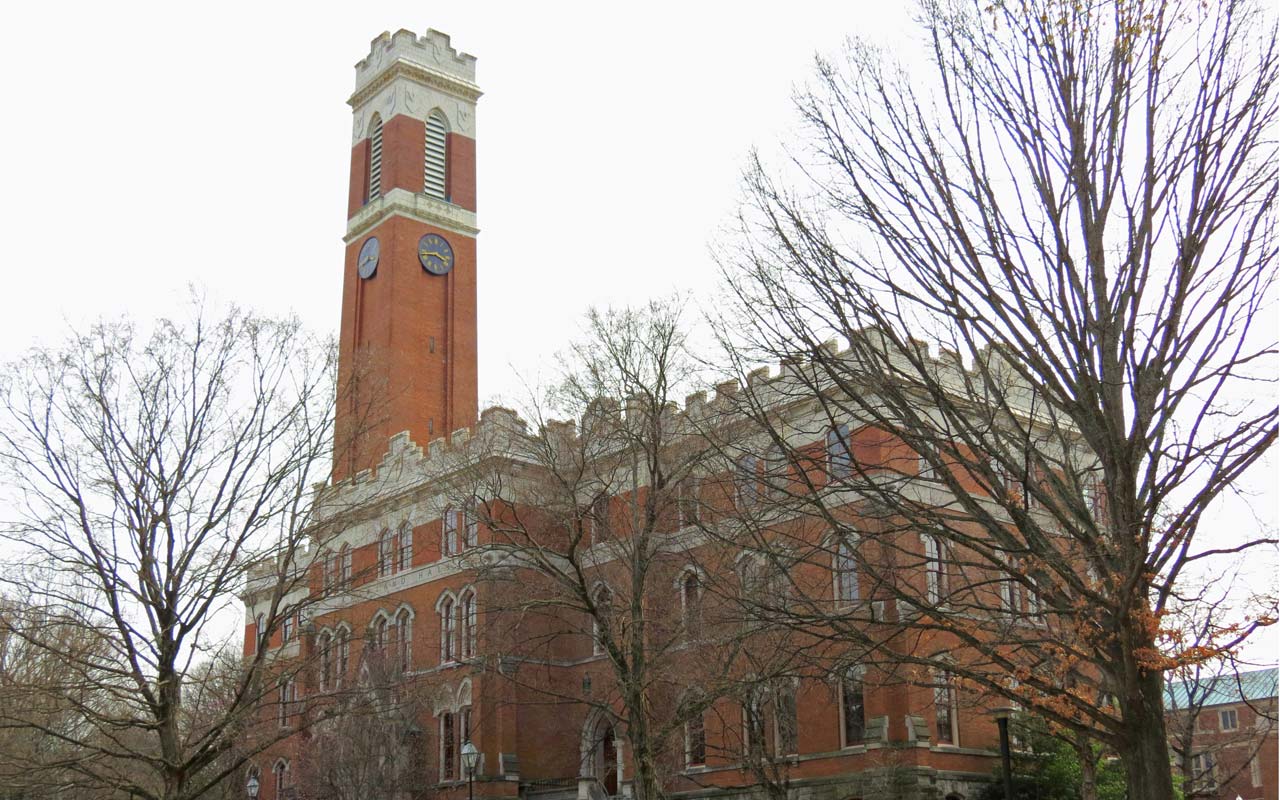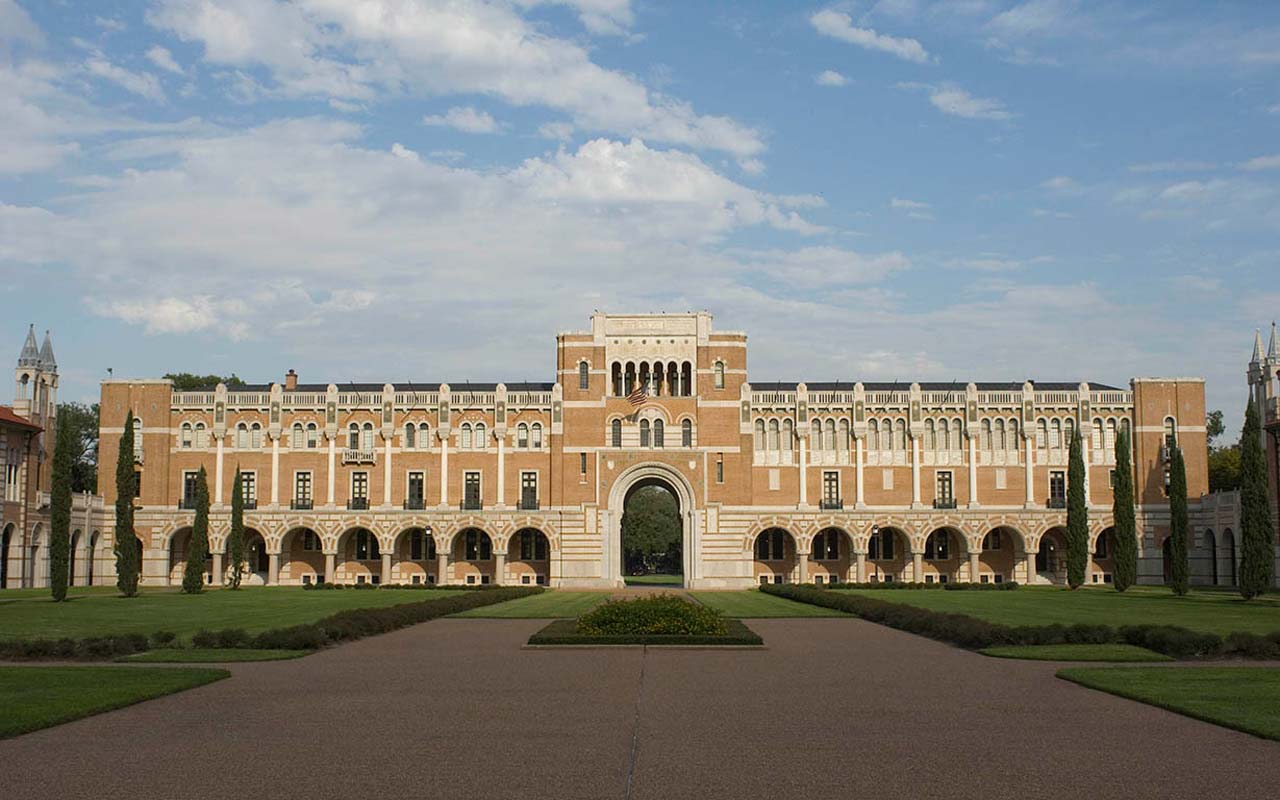10 Best Values in U.S. Colleges, 2016
These 10 schools represent the top-scoring schools on our combined rankings, which compare private universities, private liberal arts colleges and public colleges (based on out-of-state costs) to help you see your options side by side.


These 10 schools represent the top-scoring schools on our combined rankings, which compare private universities, private liberal arts colleges and public colleges (based on out-of-state costs) to help you see your options side by side. We rank our full list of 300 colleges and universities based on our definition of value: a quality education at an affordable price. Among the factors we consider for academic quality: competitive admission rates, high four-year graduation rates and low student-faculty ratios. On the cost side of the equation, we look for schools with a reasonable price tag, generous need-based aid for students who qualify, and low student debt.
This year, for the first time, we present future earnings data for each school on our best values list as a starting point to estimate your student’s post-graduation earnings. The figures, which show the median earnings of workers who started at a particular college 10 years earlier and received federal financial aid, come from the U.S. Department of Education. The data do not consider whether the workers graduated from college or went on to graduate school. Because of these limitations, we don't include these figures in calculating each school's rank on our list.
In 2015–2016, the average sticker price of a private college or university is $43,921, according to the College Board. Meanwhile, the average sticker price for out-of-state students at public colleges is $34,031. Despite their higher price tags, private liberal arts colleges and private universities dominate the top spots on our combined list. Private colleges perform well in our rankings because they typically have higher graduation rates and more generous financial aid packages than public institutions—making a private education at some colleges more affordable than the school’s sticker price suggests. When we published our first combined college ranking last year, none of the public schools piled up enough points to score a spot in the top 10. But this year, one public university—the University of North Carolina at Chapel Hill—shows up as number 10 on our combined list. Take a look.

1. Washington and Lee University
- Location: Lexington, Va.
- Undergraduate enrollment: 1,890
- 4-year grad rate: 85%
- Total annual cost: $59,202
- Avg. need-based aid: $41,472
- Average graduating debt: $23,224
- Salary yardstick: $77,600
- SEE ALSO: SLIDE SHOW: 10 Great Colleges Where Your Kid Can Graduate in 4 Years or Less
A blend of academic quality and affordability helps Washington and Lee move up three places this year to top our combined best values list. This small liberal arts college, nestled between the Blue Ridge and Allegheny mountains, also leads our list of liberal arts colleges for the second time, after consistently landing in our top 10 since 2007. A modest 2% total cost increase over last year (well below the national average of 3.5% for private schools), combined with generous need-based aid for students who qualify, propel W&L to the top. Students with good grades, strong test scores or other qualities the school is seeking may also qualify for merit aid. W&L offers merit aid to 14% of students who don’t receive need-based aid, at an average of $36,293 per year in non-need-based aid to students who qualify.
This 266-year-old school, named for George Washington and Robert E. Lee, is competitive. W&L accepts only 20% of applicants. Nearly half of incoming freshmen score 700 or higher on the critical-reading portion of the SAT, and 53% score top marks on the math section. Students abide by the school's honor code, which lets students proctor their own exams, and a "speaking tradition" that dictates that students and faculty greet everyone they pass on campus.

2. Princeton University
- Location: Princeton, N.J.
- Undergraduate enrollment: 5,391
- 4-year grad rate: 90%
- Total annual cost: $58,660
- Avg. need-based aid: $42,097
- Average graduating debt: $6,600
- Salary yardstick: $75,100
Generous financial aid awards and low student debt, plus outstanding academics, solidify Princeton's second-place finish on our combined list (it also earns top honors on our list of private universities for the second time in a row). The generous need-based aid cuts this Ivy League school's annual sticker price by an average of 72%. And at Princeton, borrowing isn't part of the deal. In 2001, the school became the first to institute a no-loan financial aid policy—awarding all accepted students 100% of their demonstrated financial need in the form of scholarships and grants. Roughly one in five families borrow on their own, but the average debt among students that do borrow is less than a quarter of the national average for private school students ($30,200) and the second lowest, after Berea College, of all 300 schools in our rankings.
Princeton is one of the most selective schools on our list. The school accepts only 7% of applicants; two-thirds of accepted students decide to enroll, and 98% of freshmen return for their sophomore year. Among incoming freshmen, nearly three-fourths score 700 or higher on the critical-reading portion of the SAT, and 79% score 700 or higher on the math portion. Once on Princeton's 500-acre campus, in central New Jersey, students can select from academic courses in 36 areas of study and some 300 student-led organizations, exploring everything from astrobiology to cooking to 3D printing.

3. Harvard University
- Location: Cambridge, Mass.
- Undergraduate enrollment: 6,636
- 4-year grad rate: 86%
- Total annual cost: $61,659
- Avg. need-based aid: $44,430
- Average graduating debt: $15,117
- Salary yardstick: $87,200
- SEE ALSO: SLIDE SHOW: 10 Best Colleges With the Lowest Average Graduating Debt
Harvard moves up three places this year to nab the third spot on our combined best values list. Despite an annual sticker price of more than $60,000, generous need-based financial aid, which is awarded to 60% of students, helps make a Harvard education surprisingly affordable. The average annual need-based aid award for students who qualify cuts the school's annual sticker price by 72%. About three-fourths of families avoid borrowing—and the average debt among students who do borrow is about half of the national average for private school students.
Middling students need not apply: Harvard's 6% admission rate ties with Yale's as the second most competitive of all 300 schools in our ranking. Of the students who are offered admission, 85% of students enroll (the highest yield of all of the schools in our ranking). The school also boasts some of the highest test scores in our combined top 10; 79% of students score 700 or higher on the critical-reading portion of the SAT, and 81% score top marks on the math portion.

4. Davidson College
- Location: Davidson, N.C.
- Undergraduate enrollment: 1,770
- 4-year grad rate: 90%
- Total annual cost: $61,119
- Avg. need-based aid: $37,170
- Average graduating debt: $22,000
- Salary yardstick: $58,500
Strong academics help Davidson College, located about 20 miles north of Charlotte, excel in our rankings. Davidson's 22% admission rate and 90% four-year graduation rate have both improved in recent years, enabling this tiny liberal arts college to climb consistently on our list. The school's broad-based liberal arts curriculum allows students to select from more than 850 courses each year. Outside of class, students can explore other interests through more than 200 student organizations. Life on Davidson's 665-acre campus centers on the school’s honor code, which emphasizes trust between students and faculty and responsible behavior.
Nearly half of Davidson students receive need-based aid, which cuts the total cost of attendance by 61%, on average, for students who qualify. The school also awards an average of $23,834 to 15% of students who don't qualify for need-based aid. And Davidson's financial aid programs don't saddle students with aid that has to be repaid. In 2007, the school became the first liberal arts college to eliminate loans from all financial aid packages. Nearly 30% of students do take loans, but the average debt among those who do borrow is about $8,000 less than the national average for students at private colleges and universities.

5. Swarthmore College
- Location: Swarthmore, Pa.
- Undergraduate enrollment: 1,542
- 4-year grad rate: 89%
- Total annual cost: $62,690
- Avg. need-based aid: $40,314
- Average graduating debt: $21,866
- Salary yardstick: $49,400
- SEE ALSO: SLIDE SHOW: 10 Best Values in Public Colleges, 2016
This small liberal arts college, on a 425-acre campus 11 miles southwest of Philadelphia, attracts stellar students. The school accepts just 17% of applicants; 64% score 700 or higher on the critical-reading portion of the SAT, and 68% score top marks on the math section. Swarthmore offers its students more than 600 courses in more than 40 areas of study. Students can also choose additional courses offered through an agreement with nearby Bryn Mawr and Haverford Colleges as well as the University of Pennsylvania. Three-fourths of Swarthmore graduates plan to go on to graduate school within five years of graduation, and nearly 20% of Swarthmore alums complete a doctoral program.
A generous average need-based financial aid award of $40,314 slashes the total cost of attendance for students who qualify to about one-third of the school's annual sticker price. As a no-loan school, Swarthmore's financial aid packages consist entirely of scholarships and grants. One-third of students still borrow, but the average debt at graduation for those students is about 70% of the national average for students at private colleges.

6. Vanderbilt University
- Location: Nashville, Tenn.
- Undergraduate enrollment: 6,851
- 4-year grad rate: 88%
- Total annual cost: $61,470
- Avg. need-based aid: $39,953
- Average graduating debt: $20,790
- Salary yardstick: $60,900
Vanderbilt University, located a mile and a half southwest of downtown Nashville, racks up points in our ranking for its strong academics, including a competitive 13% admission rate, high test scores among incoming freshmen (90% score 30 or higher on the ACT), and an eight-to-one student-faculty ratio, which generally leads to small class sizes. On campus, students can study subjects ranging from civil engineering to economics to musical arts and join any of more than 500 clubs and organizations outside of class.
The school's $4 billion endowment helps Vanderbilt meet 100% of student’s demonstrated financial need. Nearly half of students qualify for need-based aid, and the average need-based aid award slashes 65% off the school's annual sticker price. Vanderbilt’s no-loan financial aid packages means students don't have to load up on debt. About one-fourth of students borrow, but generous need-based and non-need-based aid help keep student borrowing to a minimum. Vandy awards non-need-based aid to 20% of students who don't receive need-based financial aid. The average non-need-based aid award of $22,372 cuts the school's annual sticker price by 36%.

7. Rice University
- Location: Houston, Tex.
- Undergraduate enrollment: 3,926
- 4-year grad rate: 82%
- Total annual cost: $56,703
- Avg. need-based aid: $34,954
- Average graduating debt: $22,241
- Salary yardstick: $59,900
- SEE ALSO: SLIDE SHOW: 10 Best College Majors for a Lucrative Career
Located in the heart of the nation's fourth-largest city, Rice University stands out for its low six-to-one student-faculty ratio and 97% freshman retention rate. The school is also an attractive option for families who don't expect to qualify for financial aid but still need to keep college costs in check. Rice's annual sticker price of $56,703 is the second lowest among the top 20 schools in our combined list. The school awards need-based aid to nearly 40% of students—cutting the annual sticker price by 62%. And 21% of students who don't qualify for need-based aid receive merit aid, with an average non-need-based aid award of $13,730. About two-thirds of graduates avoid borrowing.

8. Pomona College
- Location: Claremont, Calif.
- Undergraduate enrollment: 1,650
- 4-year grad rate: 90%
- Total annual cost: $63,670
- Avg. need-based aid: $41,443
- Average graduating debt: $16,273
- Salary yardstick: $52,600
This small college in southern California attracts bright students from around the country and the world for its broad-based liberal arts curriculum and idyllic campus, located within an hour's drive of Los Angeles, the mountains, the desert and beaches. Fueling its success in our rankings are stellar academics, including a competitive 12% admission rate and high test scores among incoming freshmen—73% score 700 or higher on the critical-reading portion of the SAT, and 75% score top marks on the math portion. Students can select from 47 majors in the arts, humanities, social sciences and natural sciences. With a freshman retention rate of 99%, Pomona has one of the highest rate of any school on our list, and 90% of its students graduate on time.
On the financial side, the school's average need-based-aid award cuts the annual sticker price by 65%. And Pomona's no-loan policy keeps student debt to a minimum. About one-third of students borrow, but the average debt of $16,273 is just over half of the national average for private-school borrowers.

9. Yale University
- Location: New Haven, Conn.
- Undergraduate enrollment: 5,477
- 4-year grad rate: 87%
- Total annual cost: $63,250
- Avg. need-based aid: $45,710
- Average graduating debt: $14,853
- Salary yardstick: $66,000
- SEE ALSO: SLIDE SHOW: 10 Worst College Majors for Your Career
Yale's top-notch academics—including a highly competitive 6% acceptance rate and high test scores among incoming freshmen—help this Ivy secure its place on our best values list. Nearly 80% of incoming freshmen score 700 or higher on the critical-reading and math portions of the SAT. Once on campus, Yalies can choose from among roughly 2,000 courses each year in more than 145 departments and programs. And no matter which courses students choose to enroll in, they have access to plenty of academic brainpower, thanks to the school's six-to-one student-faculty ratio.
Yale's $25.6 billion endowment helps the school meet 100% of financial need for students who qualify, with half of students receiving need-based aid. The average need-based-aid award cuts the school’s annual sticker price by 72%. Like many of our top contenders, Yale doesn't include loans in financial aid awards. Parents: Don't assume that you make too much money to qualify for need-based aid—the only kind that Yale offers. Families earning $200,000 or more may still qualify for some financial help.

10. The University of North Carolina at Chapel Hill
- Location: Chapel Hill, N.C.
- Undergraduate enrollment: 18,350
- 4-year grad rate: 81%
- Total out-of-state annual cost: $46,017
- Avg. need-based aid: $14,791
- Average graduating debt: $18,945
- Salary yardstick: $50,400
A blend of strong academics and financial aid help the Tar Heels, a perennial winner of our public college rankings, break into the top 10 on our combined best values list. The school also heads our list of public colleges, for both in-state and out-of-state students. The University of North Carolina at Chapel Hill has a stellar academic record, including a 28% admission rate and solid test scores (24% of students score 700 or higher on the critical-reading portion of the SAT, and 32% score top marks on the math section).
Although UNC's annual out-of-state sticker price is higher than the national average for out-of-state cost of attendance at four-year public colleges ($34,031), generous need-based aid awards, which are doled out to 43% of students, cut the school's annual out-of-state sticker price by 32%. Much of this aid is awarded as scholarships and grants (which don't have to be repaid) rather than loans.
Get Kiplinger Today newsletter — free
Profit and prosper with the best of Kiplinger's advice on investing, taxes, retirement, personal finance and much more. Delivered daily. Enter your email in the box and click Sign Me Up.

-
 5 Easy Weatherproofing Projects That Help Prevent Damage and Save on Insurance
5 Easy Weatherproofing Projects That Help Prevent Damage and Save on InsuranceProtect your home from storms and water damage with these simple weatherproofing upgrades — some may help reduce your home insurance premium.
By Paige Cerulli
-
 If Trump Fires Jerome Powell, What Happens To Savings and Mortgage Rates?
If Trump Fires Jerome Powell, What Happens To Savings and Mortgage Rates?President Donald Trump expressed his desire to remove Fed Chair Jerome Powell. If the president is successful, how would it impact your savings accounts?
By Sean Jackson
-
 What to Do With Your Tax Refund: 6 Ways to Bring Growth
What to Do With Your Tax Refund: 6 Ways to Bring GrowthUse your 2024 tax refund to boost short-term or long-term financial goals by putting it in one of these six places.
By Rachael Green
-
 What Does Medicare Not Cover? Eight Things You Should Know
What Does Medicare Not Cover? Eight Things You Should KnowHealthy Living on a Budget Medicare Part A and Part B leave gaps in your healthcare coverage. But Medicare Advantage has problems, too.
By Donna LeValley
-
 15 Reasons You'll Regret an RV in Retirement
15 Reasons You'll Regret an RV in RetirementMaking Your Money Last Here's why you might regret an RV in retirement. RV-savvy retirees talk about the downsides of spending retirement in a motorhome, travel trailer, fifth wheel or other recreational vehicle.
By Bob Niedt
-
 The Six Best Places to Retire in New England
The Six Best Places to Retire in New Englandplaces to live Thinking about a move to New England for retirement? Here are the best places to land for quality of life, affordability and other criteria.
By Stacy Rapacon
-
 The 10 Cheapest Countries to Visit
The 10 Cheapest Countries to VisitWe find the 10 cheapest countries to visit around the world. Forget inflation woes, and set your sights on your next vacation.
By Quincy Williamson
-
 15 Ways to Prepare Your Home for Winter
15 Ways to Prepare Your Home for Winterhome There are many ways to prepare your home for winter, which will help keep you safe and warm and save on housing and utility costs.
By Donna LeValley
-
 Six Steps to Get Lower Car Insurance Rates
Six Steps to Get Lower Car Insurance Ratesinsurance Shopping around for auto insurance may not be your idea of fun, but comparing prices for a new policy every few years — or even more often — can pay off big.
By Donna LeValley
-
 How to Increase Credit Scores — Fast
How to Increase Credit Scores — FastHow to increase credit scores quickly, starting with paying down your credit card debt.
By Lisa Gerstner
